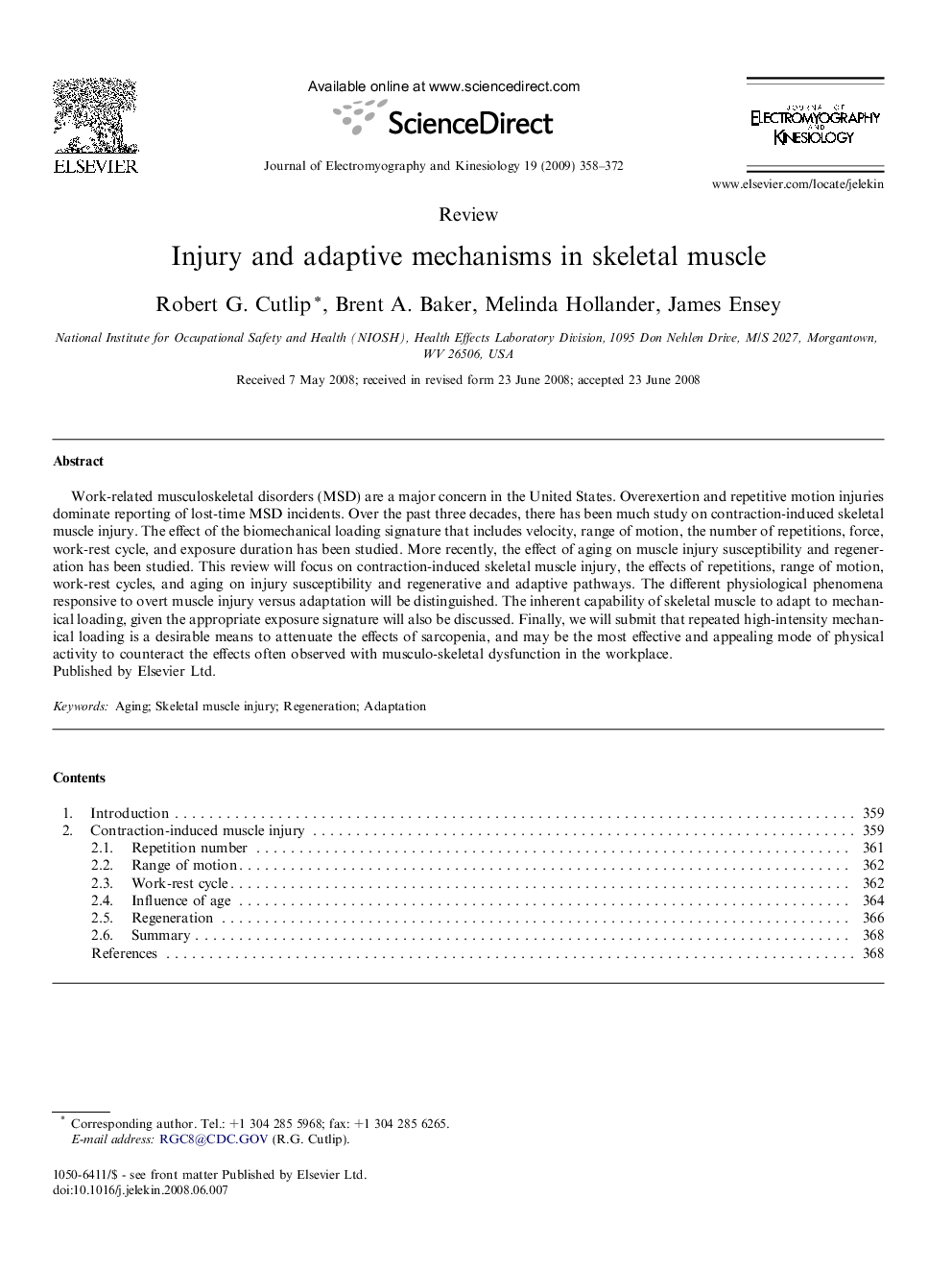| Article ID | Journal | Published Year | Pages | File Type |
|---|---|---|---|---|
| 4065333 | Journal of Electromyography and Kinesiology | 2009 | 15 Pages |
Work-related musculoskeletal disorders (MSD) are a major concern in the United States. Overexertion and repetitive motion injuries dominate reporting of lost-time MSD incidents. Over the past three decades, there has been much study on contraction-induced skeletal muscle injury. The effect of the biomechanical loading signature that includes velocity, range of motion, the number of repetitions, force, work-rest cycle, and exposure duration has been studied. More recently, the effect of aging on muscle injury susceptibility and regeneration has been studied. This review will focus on contraction-induced skeletal muscle injury, the effects of repetitions, range of motion, work-rest cycles, and aging on injury susceptibility and regenerative and adaptive pathways. The different physiological phenomena responsive to overt muscle injury versus adaptation will be distinguished. The inherent capability of skeletal muscle to adapt to mechanical loading, given the appropriate exposure signature will also be discussed. Finally, we will submit that repeated high-intensity mechanical loading is a desirable means to attenuate the effects of sarcopenia, and may be the most effective and appealing mode of physical activity to counteract the effects often observed with musculo-skeletal dysfunction in the workplace.
